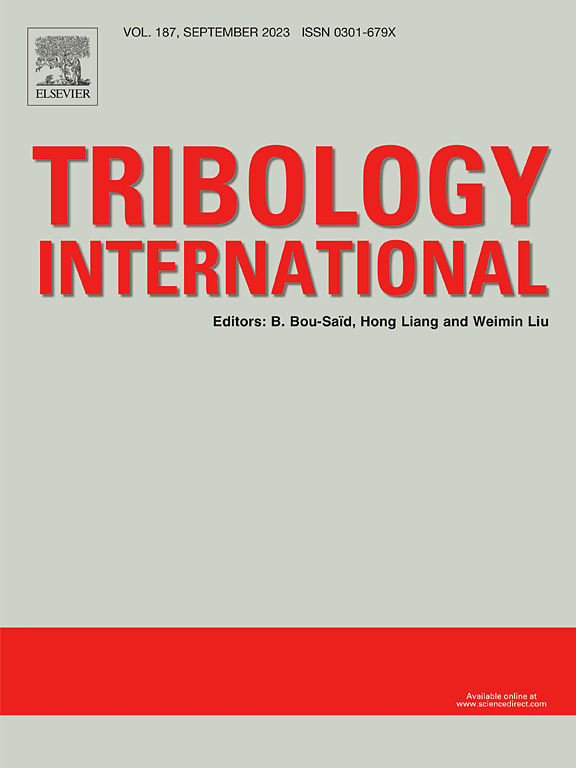Multi-phase FCC-based AlxCrFeNi2Si(1-x) medium entropy alloy coatings design for tailoring toughness and wear resistance of CSS-42L bearing steel
IF 6.1
1区 工程技术
Q1 ENGINEERING, MECHANICAL
引用次数: 0
Abstract
Multi-phase FCC-based AlxCrFeNi2Si(1-x) (x = 0, 0.2, 0.5, 0.8, 1) medium entropy alloy coatings were designed by adjusting Al/Si molar ratio and manufactured by employing laser melting deposition technology on CSS-42L aerospace bearing steel, with the comprehensive consideration on toughness and wear resistance demands of the auxiliary bearing system. Experimental results indicated that the addition of Al sets the tone of the dual-phase FCC+BCC structure of CrFeNi2Al MEA coating, while the exclusive addition of Si promotes the formation of silicides. By adjusting the Al/Si molar ratio, a coating with a microstructure of multiphase FCC+eutectic BCC/silicide was obtained. The co-doping of Al and Si has improved the microhardness, toughness, and wear resistance of the coating to different extents. Among the studied MEA coatings, the Al0.2CrFeNi2Si0.8 coating exhibited the best wear resistance while maintaining higher toughness, attributed to the synergistic effects of the FCC, and eutectic BCC/silicide phases. Second phase strengthening and solid solution strengthening caused by lattice distortion are the main mechanisms to improve the mechanical and tribological properties of the AlxCrFeNi2Si(1-x) MEA coatings. The second phase mainly includes the high strength BCC phase and silicide phase, while the lattice distortion is mainly caused by the large atomic size mismatch and elastic mismatch between Al and Si atoms and other atoms.
求助全文
约1分钟内获得全文
求助全文
来源期刊

Tribology International
工程技术-工程:机械
CiteScore
10.10
自引率
16.10%
发文量
627
审稿时长
35 days
期刊介绍:
Tribology is the science of rubbing surfaces and contributes to every facet of our everyday life, from live cell friction to engine lubrication and seismology. As such tribology is truly multidisciplinary and this extraordinary breadth of scientific interest is reflected in the scope of Tribology International.
Tribology International seeks to publish original research papers of the highest scientific quality to provide an archival resource for scientists from all backgrounds. Written contributions are invited reporting experimental and modelling studies both in established areas of tribology and emerging fields. Scientific topics include the physics or chemistry of tribo-surfaces, bio-tribology, surface engineering and materials, contact mechanics, nano-tribology, lubricants and hydrodynamic lubrication.
 求助内容:
求助内容: 应助结果提醒方式:
应助结果提醒方式:


